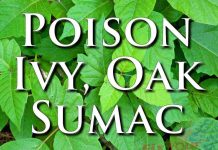How To Treat A Black Eye With Basic First Aid
A black eye is formed from bleeding under the skin’s surface. Usually, a black eye is no cause for concern; however, with the presence of blood, even if it’s under the skin, comes the potential of a serious injury. In this case, the serious injuries will most always involve either the eye or skull. Eye-related Injuries. Any trauma to the eye region can potentially cause hyphema – a condition in which blood seeps into the eye(s). The bleeding can occur in one...
How To Treat A Cut With Basic First Aid
Cuts are defined as areas of damage to the skin and/or underlying muscle tissue. A majority of cuts will bleed – a very small amount on some occasions and a very large and significant amount on others. The dangers of any cut lie in three different categories: location on the body, depth of the cut, and size of the cut. For that reason, it’s always safer to closely examine and diagnose the severity of any cut, no matter the depth or size or location, before...
How To Treat Common Bug Bites On The Trail – First Aid
It’s important to know that not all bug bites are created equal, and that your own body will determine how you react to a particular bite. Some bites are hardly worth noticing, while others can require immediate medical attention. It’s crucial that you’re able to distinguish the different types of bug bites and to know your personal reactions, as well as those in your riding group, to each type of bug bite...
How To Treat Poison Ivy, Oak, & Sumac – First Aid
Do you know what poison ivy is? Have you ever had an especially intense itch? Of course you have, don't lie. Think about how crazy it drove you, and how you wanted nothing more than to make it stop. Remember how awesome it felt to scratch that itch and finally get relief? Now, imagine getting that same itch, multiplying its intensity by ten, and having to deal with it for two straight weeks with only the tiniest bit of relief. If you can imagine that, then you’ll...
How To Treat Exhaust Pipe Burn: Severity And Treatment – First Aid
When riding a machine powered by controlled explosions, parts will get hot. When you go camping you will most likely build a fire, which is also hot. When cooking over that fire, your pots and pans will be hot. Humanity has used fire to advance civilization over thousands of years, and fire can’t tell the difference between you and a hot dog. So always be mindful of where the hot is so you can avoid it...
How To Treat A Bruise Based On Severity – First Aid
Everyday bruises are rarely (if ever) regarded as being serious. And nine times out of ten they’re not. But there are other factors to take into consideration – the major one being how you got the bruise in the first place. For that reason, it’s never a bad idea to brush up on first aid for bruises. If there is no serious injury, then you can at least help alleviate the symptoms and get rid of the bruise faster...
How To Treat The Symptoms of Hypothermia – First Aid
Hypothermia can sneak up on you virtually without notice. And once it has taken hold, your life is in immediate jeopardy. For those reasons, it’s crucial that you’re able to properly identify the early stages of hypothermia, both in yourself and those riding with you. And once you’re able to identify it, that you’re able to effectively combat it, before it diminishes your mental capacity and ability to properly treat it...
What Are Heat Cramps & What Are The Warning Signs? – First Aid
Heat cramps are very painful muscle spasms that occur as a result of intense activity in high temperatures. This activity could be exercising, playing football, or, in your case, riding a dirt bike. They’re the least serious of the three heat-related illnesses – heat cramps, heat exhaustion, and heatstroke. Heat cramps tend to be more prolonged and more intense than typical cramps. While they can include just about any muscle group, the most common...
Blisters Are Preventable, But Learn How To Identify & Treat Them Just In Case...
Blisters are pockets of fluid that form on the surface of the skin. They are filled with a substance called sebum, which is essentially plasma without the red blood cells and platelets. A blister’s purpose is to protect the underlying layers of skin from further damage. What Causes Blisters? The most common causes of blisters are heavy friction on the skin’s surface caused by the rigorous and repeated rubbing of the area, and burns. They can also form in response...
Learn The Symptoms Of A Knee Dislocation And How To Treat It – First...
Knee dislocations are very serious injuries. And unfortunately, they’re more common in athletes than in any other person. But what a lot of people don’t realize (athletes included) is that there’s actually more than one type of knee dislocation. And it’s important that you know which one you’re dealing with before attempting any form of first aid. Below, you’ll find an overview of the two different types of knee...










